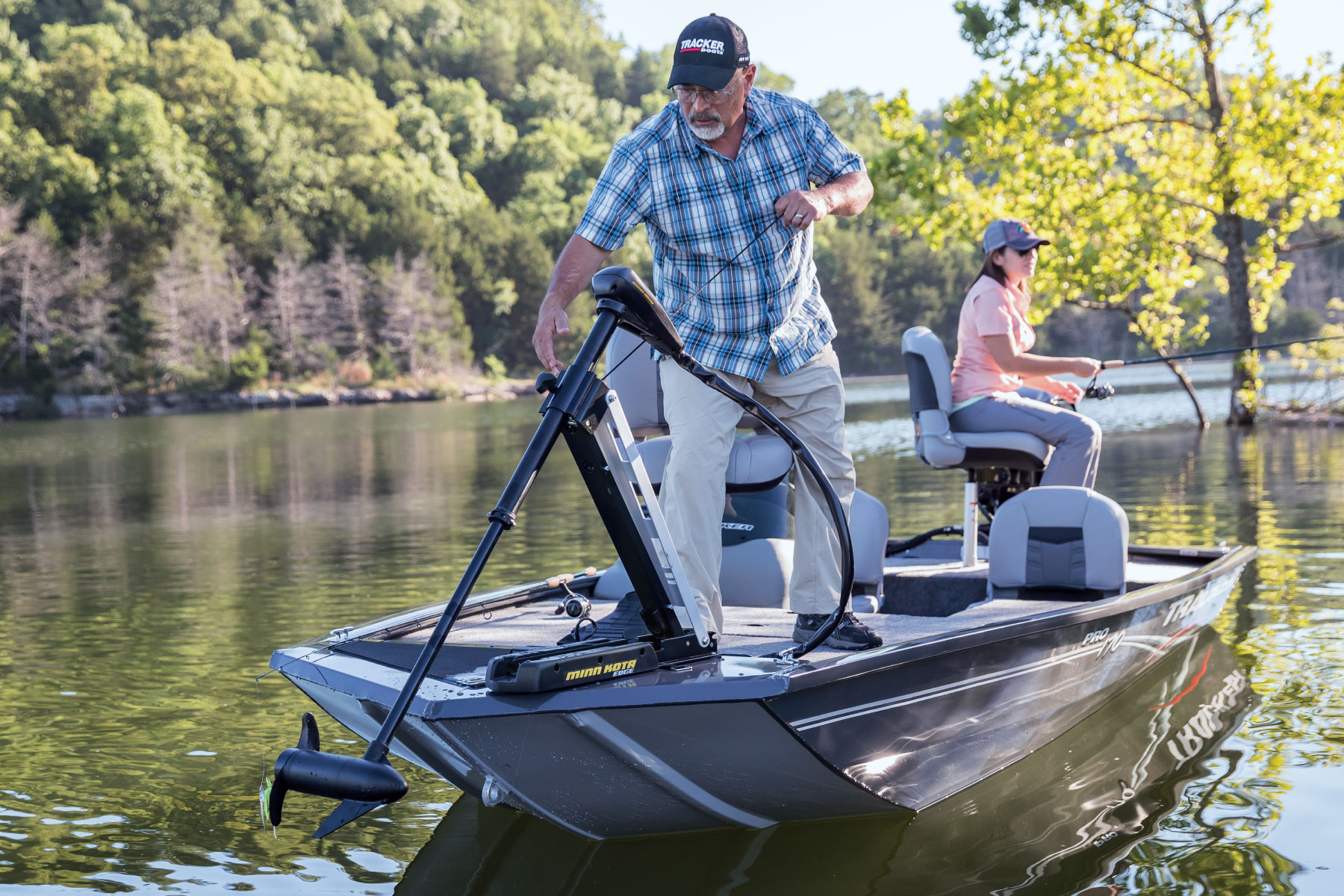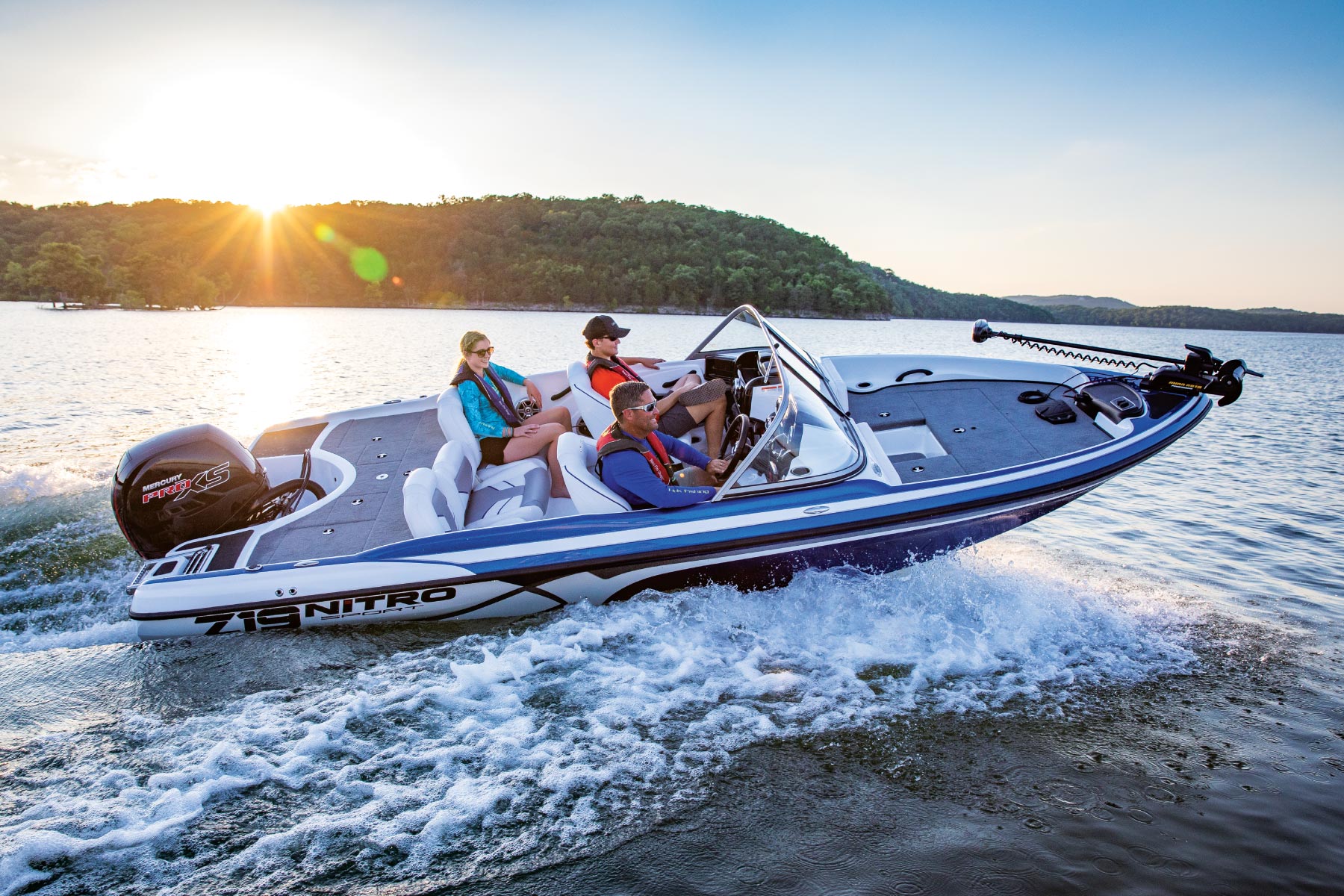Should I switch from an aluminum propeller to one made of stainless steel? Will a four-blade prop improve my holeshot? Is my prop too big or small? What prop do I need to make my boat go faster?
Those are popular propeller questions pondered by boat owners. If you are among those, there are factors worth considering before you go shopping for a new prop. Propellers have come a long way in recent years, as boat and motor manufacturers continually refine their products to improve performance, fuel economy and boat handling.
Package boats are usually sold with a propeller for the outboard. Manufacturers and dealers aim to rig the motor and prop for the best all-around performance and fuel economy. The middle ground is okay for some boaters, while others are looking for more performance with specialized activities like watersports, bass fishing and pontooning. That’s when it’s worth the investment of having more than one prop that can be changed out depending on the need.
End the confusion about how to answer those head-scratchers above by simplifying the selection process. There is no need to get spun out when you consider the two most important characteristics for choosing a propeller—diameter and pitch. Here is a primer on both to help you shop for the best prop for your boat.
Propeller diameter is the distance across the circle made by the blade tips. Mercury Marine’s manual, “Everything You Need to Know About Propellers,” says, “Choosing the propeller’s diameter is determined by the rpm at which the propeller will be turning and the amount of power that will be delivered to the propeller.”
Based on the above theory, diameter usually increases for propellers used on slower boats and decreases for faster boats. The manual states, “when all other variables remain constant, diameter will increase as power increases; diameter will increase as propeller rpm decreases."
The Mercury manual defines pitch as “the distance a propeller would move in one revolution if it were moving through a soft solid, like a screw through wood.” For example, a 21-pitch prop would move forward 21" in one revolution. The lower the pitch, the better the holeshot. What you gain there is sacrificed in top speed, though. The reason why is a lower pitch makes the engine reach maximum rpm at slower speed. Conversely, you gain more speed with a higher pitch prop, but slower acceleration. You can’t have both, so decide which is most important to your boating needs.
If you need more speed, a higher pitch is the way to go. If you use a propeller with too high a pitch, though, the motor simply won’t have enough horsepower to turn it adequately, so the revolutions per minute will drop. This is called over-propping, which overloads the engine, causing excessive wear. Under-propping—fitting a propeller with too low a diameter or pitch—can damage your engine through over-revving. It will also adversely affect fuel consumption.
Ideally, an outboard engine under load should reach the manufacturer’s recommended maximum revolutions at wide open throttle (WOT), usually given as a range spanning a few hundred rpm. The trick is to find a propeller that delivers acceptable acceleration and top speed while still allowing your outboard to reach its recommended revs at WOT.
One of the perplexing questions posed at the beginning of this article is choosing between a three- or four-blade prop. Either works well for outboard motors. You get all-around performance with an advantage on top speed with three-blade designs. Boats that are troublesome to get on plane, underpowered or used in watersports where top speed is not critical perform well with four-blade props.
Expect rpms to drop by 50 to 150rpm with identical pitch in four-blade props. Three-blade props are generally best for recreational boats with three-, four- and six-cylinder outboards. You get the better of both worlds with a good holeshot and top-end performance.
Another choice to make is choosing between aluminum and stainless-steel materials. Common with new package boats are aluminum props, which are inexpensive and repairable. Consider these differences when thinking of upgrading to stainless steel. Thinner blades and more advanced designs give stainless steel a performance edge over aluminum. Stainless costs more but is five times more durable than aluminum. Stainless props can be repaired, at a higher cost, to like-new condition, while repaired aluminum will suffer from metal fatigue and a loss of strength.
There are many factors to consider when choosing a propeller for outboard motors. The only other question to ask yourself about choosing a prop is this: Should I seek the advice of an expert?
The answer is absolutely yes!
The trick is choosing an outboard prop that delivers acceptable acceleration and top speed. That’s a balancing act that is indeed best determined by experts. Help is nearby at a Bass Pro Shops/Cabela’s Boating Center. The associates are avid boaters, like you, and can help answer your questions and guide you to making the best choice. And the Power Pros can handle the rigging job, regardless of your boat brand. If you have a sterndrive-powered boat, you’ll find help there, too.
Before you go, make a list of your current propeller data to share with the experts.
- Present prop diameter
- Present prop pitch
- Right- or left-hand prop rotation (clockwise is right hand)
- Number of blades
- Material (aluminum or stainless steel)
You will also need to bring engine data, like number of engines, rated horsepower, gear case size, the rpm at Wide Open Throttle (WOT) and of course, manufacturer, model and year.


